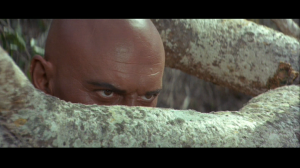Thanks to Gregory Robinson for a review copy of his book All Movies Love the Moon, Prose Poems on Silent Film.
Said poems are inspired by intertitles, which we like here at Shadowplay. It’s a very handsome book, though as a purist I prefer the authentic intertitles to the recreations — but I guess there’s a copyright issue there, and also a certain pleasure in being able create new versions of old title cards. As for Gregory’s additional words, they are very poetic indeed ~
HOW IT FEELS TO BE RUN OVER (1900)
It begins with an accident, the inevitable result of both ten thousand objects both real and imaginary cosmically tumbling, colliding at the nexus where silver meets secondhand meets skin. The burst of light is the birth of movies.
Before you, a dirt road. A carriage passes, then a cyclist, both stirring a cloud of dust that settles on an automobile. The car is far angrier, making mad S shapes in the road, darting forward like a shark. Logic says move, but you have grown too heavy in this dream and the car is impossibly close. It breaks out of its world into yours, a pharaoh crossing over, a moth errant unto light, and Oh! Mother will be pleased.
A pause. Here is death, an old woman whispers over popcorn. I knew it would happen like this. In movies mortality makes your acquaintance, inscripting your bones.
The one on CITY LIGHTS at the end is particularly fine.
Another plug, while I’m here. Friend of Shadowplay Paul Clipson is not just (just?) an experimental filmmaker, he’s a projectionist, and his limited-edition book of projectionist’s drawings, REEL, shows a creative solution to a practical problem: identifying approaching reel changes.
You can buy it here, if there are any left.










